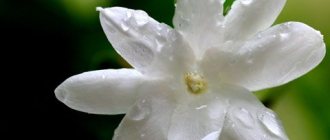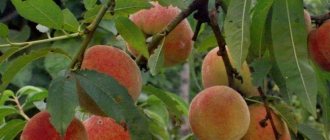One of the most mysterious representatives of the mulberry family is the mulberry. The tree can be found in every corner of the globe. Prefers to grow in hot climates, thrives in temperate climates, and tolerates low temperatures. Mulberries are also grown in Russian regions, from the coasts of the Black Sea to the coast of Sakhalin Island.
Description
Mulberry (Morus) is a deciduous tree, often called "mulberry".
Under natural conditions it grows in the subtropics of North America, Africa, and Asia. This genus is not numerous; there are only 10 species in the wild. During the reign of Ivan the Terrible in Russia, people already knew about mulberry. The silk weaving factory produced fine fabric for the royal entourage. Peter I imposed a ban on cutting down the mulberry tree because of its value. In addition to fabric, musical instruments, all kinds of crafts, and utensils were made from dense and elastic wood.
Young mulberries grow quickly, but over time their growth slows down. The height of an adult tree reaches 20 m. The plant has a wide crown, the shape of which is often spherical.
Mulberry lives a long time, the average age is about 150 - 200 years, some species live about 400 years.
The leaf blades look like blades, their edges are jagged, and they are arranged alternately. Inflorescences in the form of a spike, consisting of medium-sized female (monoecious) or male (dioecious) flowers. Some types of mulberries can bear both male and female flowers at the same time.
The fruit is a small polydrupe: diameter 10-40 mm, length 20-30 mm. The color of the fruit, depending on the variety, can be different - from dark purple, even black, to white. Fleshy, sweet and sour fruits are similar to blackberries and raspberries, their shape is spherical, cylindrical or cone-shaped. They have a pleasant aroma.
Productivity is high. From one mulberry tree growing in a favorable climate, you can get up to 200 kilograms of berries per year. The period of fruit ripening also depends on the natural growing area. In the Russian expanses, certain varieties bear fruit in July; the harvest is often harvested in August. The fruiting period depends on the varietal variety; it can last from two weeks to a month or longer.
There is a legend about how the mulberry appeared. In ancient times, one silkworm wove a beautiful girl an unusual dress from light fabric, decorated with lace. The dress turned out not only beautiful, but also had magic. A woman who dressed up in a dress became even more attractive. In addition, she could go a whole day without food. The girls passed the outfit on to each other, and the number of beauties became more and more numerous.
One of the owners of the dress became the king’s bride and did not want to share her wonderful dress with her friends anymore. Angry friends burst into the future queen's palace, grabbed her dress, and tore it to shreds.
At that same moment, before the eyes of the angry women, an amazing transformation of the outfit into a tree took place: a trunk with branches appeared from the hem of the dress, and swollen pinkish buds formed on the branches from small pieces that flew up. Leaves opened from the buds and formed a lush and dense crown.
This tree was called mulberry. The plant is valued not only for its sweet and juicy fruits, but also for producing the finest silk thread, which the silkworm caterpillar “weaves” while feeding on the leaves. Thus, the thread is used to create an elegant dress.
Without the mulberry tree we would not have silk. Progress has stepped far forward, people have learned to produce artificial silk, but it cannot be compared with natural silk. The mulberry not only feeds the silkworm, but has been considered the “tree of life” since ancient times. Its wood was used to make amulets that protected against evil forces. The mulberry tree symbolizes hard work.
General information
Mulberry belongs to the genus Morus L. of the mulberry family (Moraceae). It also has other names: here, mulberry, tyutina, mulberry tree. The classification of mulberry is ambiguous. Scientists cannot decide on the taxonomy of the genus Morus. According to one system there are 10–12 species, according to another – 60–120. This range of opinions is due to the easy interbreeding of different species and their diversity.
Southeast Asia and Oceania are home to the largest number of mulberry species (40 species or 57%). The second major center is the American continent (22 species or 21%).
Mulberries are generally accepted
- white (Morus alba);
- red (M. rubra);
- black (M. nigra).
They differ in the color of the bark, not the berries. White mulberries may have black berries, but their bark is lighter.
Mulberry trees are very durable. In favorable conditions they can live up to three hundred years or more.
Interesting! The Gireyev mulberry in Bakhchisarai is protected by the state. It grows in the kitchen courtyard of the Khan's palace. Its height is 9 m, girth 5 m. It is over 300 years old.
Features of cultivation
Caring for mulberries is the same as caring for other garden crops. Timely watering, fertilizing, pruning, prevention of diseases and pests - this is the main list of work required when growing mulberries.
Silkworm tree
Selecting soil and planting location
It is important to choose the optimal location for mulberry in the garden, since this crop is long-lived. The photophilous and heat-loving mulberry requires a sufficiently lit place, protected from the wind.
The soil must be sufficiently fertile. It is not recommended to plant a tree on swampy and poor sandy soil. The presence of groundwater close to the surface of the earth will also adversely affect the growth of mulberry.
Mulberries with only male flowers will not bear fruit on their own; the gender can only be determined from a four-year-old seedling. Experienced gardeners recommend purchasing seedlings of exactly the same age, on which the first harvest has already ripened.
What time to plant
It is recommended to plant a mulberry tree in open ground in April, before sap flow begins, or in the autumn - before rainy, cold weather (September, October). Gardeners prefer autumn for planting, believing that if the mulberry overwinters, it will live for many years.
Watering and fertilizing
Mulberry trees require watering in the spring and in the first month of summer. Watering is stopped in July. This procedure is necessary if the weather has been dry for a long time. Good watering during dry periods will prepare the mulberries for winter hardiness. If there is a sufficiently large amount of natural precipitation, there is no need to water the tree.
The plant needs feeding in the same period as watering - from spring to July. In the spring they feed with fertilizers containing nitrogen, in the summer - with potassium-phosphorus. For the first feeding, nitroammofoska (50 g of fertilizer per 10 liters of water) is suitable. In summer, complex fertilizers are used, for example, “KemiroyUniversal” (20 g per 1 sq.m.). While digging tree trunk circles, you can add ash (200 g per 1 sq.m.).
When watering mulberries, it is recommended to use liquid fermented manure (1 part to 6 parts water) or bird droppings (1 part to 10 parts water) as top dressing. From mid-summer, feeding is stopped so as not to provoke the growth of new shoots, which will not get stronger by winter and will not tolerate winter frosts well.
Loosening and weeding
The near-trunk soil surface must be periodically weeded and loosened. This enriches the roots with oxygen and prevents the occurrence of diseases and pests. After weeding and loosening, the ground can be mulched with sawdust. Sawdust inhibits the growth of weeds, the soil underneath does not dry out, and a crust does not form on the ground. In this case, one condition must be observed - to update the sawdust annually.
Trimming
Pruning of the mulberry crop must be done during the dormant period - complete or partial. It is better to carry out this procedure early in the spring, before sap flow occurs. At the end of April - early May, rejuvenating pruning is carried out, and at the same time the crown is formed, until the buds open. In autumn, after leaf fall, the tree needs sanitary pruning. The air temperature during this period should not fall below +10 degrees.
In a young mulberry tree, the height of which reaches 150 cm, all branches must be removed. This must be done so that the branches of an adult tree do not fall to the ground. The central stem is left to grow to a height of 5-6 m, while cutting off competing stems. If you don’t want to regularly make formative prunings, you can leave the crown to grow naturally.
You can form a low mulberry tree; caring for it will be simple and convenient.
To do this, you need to cut off the top at a height of 1.5 - 1.7 meters, then form a “skeleton” of the tree, like a dwarf apple tree. Such a mulberry tree should have about 10 skeletal branches left. The plant requires constant support of the created form. As extraneous branches grow, they are regularly trimmed. Do not remove drooping main branches, but support them.
In the autumn, when the tree sheds all its leaves, it needs to be prepared for winter. Sanitary pruning is necessary to remove injured, dried, disease-damaged branches. Very thin stems, as well as crowns growing inward, are also removed. Sanitary pruning can not be done every year, if this is not necessary: the tree has been well preserved throughout the year.
Transfer
- Before planting, dig up the soil, removing all the weeds. When digging, add fertilizers - humus or rotted manure, wood ash and nitroammophoska. It is not recommended to add peat as a fertilizer, as it acidifies the soil substrate, which is undesirable for mulberries. You can apply fertilizer directly to the planting hole.
- After preparing the ground, we dig a planting hole. Its size will depend on the root system of the plant. The roots of the culture are quite voluminous. The average pit size is 70 by 70 cm, the depth is at least 50 cm.
- Place a drainage layer of expanded clay or broken brick at the bottom of the pit. Sprinkle with a thick layer of humus and water.
- Before planting, keep the mulberry root system in water for 10-15 minutes, saturating it with moisture. The seedling is placed in a prepared hole, and all the roots are carefully straightened.
- Sprinkle with soil, carefully shaking the stem so that there are no voids left in the ground. The soil is compacted and watered abundantly.
- When all the water has been absorbed into the ground, the tree trunk surface is mulched with cut grass, humus or sawdust.
- If the seedling is thin, you need to provide support. Place it in the center of the hole before planting the mulberry tree. When the plant is planted, tie it to a support.
- Mulberry is a large plant. Therefore, when landing, you need to take this circumstance into account. The distance in the vicinity of other representatives of the flora must be at least 4 meters.
It is advisable to buy mulberry seedlings in the region where they are grown. Plants brought from the southern regions adapt less well in the middle zone; it is difficult for them to survive the frosty winter.
Productivity
The first berries may appear on a three-year-old mulberry tree. There are few of them, they ripen singly. On a five-year-old tree, the harvest ripens abundantly and regularly. The size of the berries becomes larger, by the age of 10 their length is maximum. The fruits ripen unevenly, quickly becoming overripe. It is important not to miss the moment of picking the berries so that they do not fall off. You can lay a cloth under the crown of the mulberry tree, shake the tree, and collect the ripened fruits. The berries are used for food immediately, as their shelf life is short, or they are processed.
Preparing for winter
The tops of the shoots are more often exposed to freezing. Spring frosts are the most dangerous for the plant, especially during the flowering period; then you don’t have to wait for berries. Therefore, preparatory work for wintering is very important.
The preparation stages are as follows:
- Mulch the soil near the trunk with sawdust, fallen leaves or straw. Cover the top with a layer of mulch with spruce branches; they are needed to retain snow.
- There is no need to wrap the trunk, since the shoots usually freeze slightly.
- At the end of October, trim off the green parts of the shoots that have not yet become woody. They are most vulnerable in cold weather.
- During the period of spring frosts, you can make smoke fires, which will protect young leaves and flowers from freezing.
- It is recommended to cover young trees completely for the winter. The trunk needs to be wrapped and covering material placed over the branches. Secure the covering with boards and other heavy objects so that winter winds do not demolish this structure. Remove the cover after the threat of spring frosts, not earlier than May. It is advisable to spread poison for rodents under such a “blanket” so that they do not damage the trunk and young branches.
Spreading
Mulberry or mulberry is a tree that is known all over the world, thanks not only to the taste and beneficial qualities of the berries and bark, but also to the fibers from which the Chinese made silk. Asia, Japan, India are considered the birthplace of the white mulberry, where it grows independently in deciduous forests.
Afghanistan and Iran are considered the birthplace of the Black Mulberry. There this culture can be found in almost every garden. And the Red Mulberry was brought to Europe from North America. Attempts to grow mulberries in the central region of our country were unsuccessful. Of the many species and varieties, only a few have taken root.
In Russia, mulberries can be found in the middle zone, in Primorye and in the south. It is very difficult to grow mulberries in the North of our country. If only the plant is grown by a gardener, observing all the rules of planting and care, and the variety can withstand frost.
Reproduction methods
There are several ways to propagate mulberries.
Seeds
The seeds must be fresh, from the current season. In October, they need to be removed from the fruit and cleared of pulp. Immerse for an hour or two in a solution that stimulates growth. Sow in open ground. If seeds are sown in spring, they need stratification (5-8 weeks).
The bed where we sow the seeds should be well lit. Prepare grooves in it, water them with water and dissolved fertilizer for fruit and berry plants. Seeds are sown rarely, buried 40-50 cm into the ground. Water again. Cover the surface of the soil with a thick layer to prevent them from freezing over the winter.
In the spring, seedlings will appear that need to be watered. Weeding and fertilizing are important procedures for seedlings.
The shoots that have strengthened over the summer can be planted in the fall at a distance of at least three meters. Mulberry fruits ripen in 5-6 years.
The disadvantage of this method: a mulberry grown from seeds has very few varietal characteristics or they are completely absent, unlike an adult tree. It is better to use such seedlings as rootstocks for grafting.
Cuttings
You can propagate mulberries using cuttings. For this you will need a greenhouse. Green cuttings are cut at the beginning of summer, when the mulberry is actively growing. The stem is divided into cuttings 15-20 cm long, each with 2-3 buds.
The finished planting material is planted in a greenhouse, the planting angle is 45 degrees. The soil should be light and loose. The cutting is buried to 30 cm. A pair of upper leaves are left on the cutting. An important condition is that the greenhouse must have high humidity.
The root system will be formed on the seedling by autumn; planting in open ground should still be postponed until spring.
With this method of propagation, the young tree inherits all varietal properties from the parent crop.
By layering
If the plant did not overwinter well or was severely damaged by frost, then it can be replaced with an offspring with a developed root system. On such a layering, a crown is formed step by step. Unnecessary shoots are removed. You can dig up separate cuttings with roots, shortening them by a third, and use them as seedlings.
Reproduction by layering retains all varietal parental characteristics.
Vaccination
It is possible to graft mulberries using all known methods. Experienced gardeners prefer the copulation method: grafting is done on a cutting using a cutting. The scion and rootstock are fused, their thickness should be the same. The sections are combined with each other and wrapped with elastic tape.
Kinds
There are 17 varieties in nature; almost 500 hybrid varieties have been bred from them. Not all mulberry trees have edible fruits, and not all species are suitable as food for silkworms.
White mulberry
This dioecious tree is native to the Far East. Caterpillars that spin Chinese silk feed on the leaves of the plant. During the pupation period, insects release the finest silk threads 400–900 m long, white or pink.
It is cultivated as a raw material for feeding silkworms and producing fruits . The species grows up to 10–17 m in height, has a wide dense crown, delicate light green serrated leaves. The bark is silvery. The berries are up to 5 cm in size, sugary and juicy. There are varieties with light fruits: yellowish, white, pink. In some varieties they are dark red, almost black. Fruiting is abundant, each tree brings up to 90–100 kg during the harvest period.
White mulberry is unpretentious in maintenance; it grows on loamy, sandy, low-nutrient soils . Can be grown in urban environments. It easily establishes itself on the slopes of ravines thanks to its branched root shoots. The species is frost-resistant, can withstand cold temperatures down to -30 °C. After freezing, young branches quickly recover. The white mulberry tree lives up to 250 years. Known cultivated varieties:
- Victoria;
- White tenderness;
- Luganochka.
Black mulberry
The homeland of this monoecious species is the countries of the Middle East and Transcaucasia. Black mulberry tree prefers hot climates. In its natural environment, the plant reaches a height of 7–10 m. Its crown is picturesque, tent-shaped, and consists of long hanging shoots. Skeletal perennial branches are shorter than young ones. The width of the crown reaches several meters. The trunks are often curved, branched, and covered with dark brown bark. The leaves are dark green, thick, large, 15–17 cm long, broadly oval, with a notched base. The plates are rough to the touch. They are not suitable as food for silkworms. Trees are cultivated for their fruits . The berries are inky, purple or dark red, about 3–4 cm in size, juicy, sweet and sour. It tastes like grapes.
Fruiting of black mulberry varieties begins at 4–5 years of age. The lifespan of trees is 200–300 years. The most popular fruit varieties:
- Black Baroness;
- Istanbul;
- Hartut;
- Dark-skinned.
Possible problems
Timely treatment with fungicides for preventive purposes will reduce the risk of mulberries being damaged by diseases and insect pests. You need to spray not only the mulberry itself, but also the soil surface near the trunk.
The first treatment is carried out before the buds open, in April, the second – after the end of the tree’s growth period, in October. Bordeaux mixture or Nitrofen solution will destroy pathogenic bacteria and pests. It is advisable to treat the plant with urea (seven percent solution) in early spring: the drug is a source of nitrogen needed by the crop during the growing season.
Mulberry is resistant to diseases, but there are still exceptions. Diseases affecting the crop include:
- Powdery mildew is a fungal disease. The surface of the stem and leaves is covered with a whitish coating. The disease progresses faster in dry times, especially if the mulberry crown is too thick. At the first symptoms, it is necessary to spray the tree with Bordeaux mixture or Fundazol. For preventive purposes, fallen leaves are promptly collected and destroyed in the fall.
- Cylindrosporosis. The disease appears on the leaves in the form of red-purple spots. As the disease develops, it destroys the leaf tissue inside the spot, which crumbles. The leaf blade then turns yellow and falls off.
The plant must be immediately treated with Silit (one percent solution). Spraying should be plentiful: 3 liters of product per adult crop. The procedure is repeated after 2 weeks.
- Bacteriosis is dangerous for young shoots and leaves. The disease manifests itself in the form of black spots. Leaves curl, stems bend. Spraying with Gamair and Fitoflavin should be started as early as possible, since the disease is difficult to treat. For prevention purposes, regular treatments are needed.
- Curly small-leaved. The virus is carried by pests. The foliage wrinkles between the veins, then granular nodules appear. As the disease develops, the leaves curl and the stems become rough and brittle to the touch. The disease cannot be cured, so prevention is very important. To prevent the mulberry from becoming infected, insect carriers must be destroyed in a timely manner.
- The mulberry mushroom can settle on mulberry wood. Fungal spores get into cracks and wounds on the bark, which leads to the destruction of the mulberry trunk. If a fungus is detected, it is removed (cut out) along with the infected wood. The wound is treated with copper sulfate (5% solution). Then they cover it with a mixture: mix one part of clay and lime with two parts of cow dung.
Trimming
Young shoots are pinched in the spring. Long shoots are shortened after flowering. In the fall, branches that have strayed from the intended style are pruned. The branches are cut short in the spring, after the winter period, before sap flow. In home growing conditions, the growth of the tree is limited. The crown is thinned out, diseased, dried out, weak shoots are removed. Frequent pruning does not affect the yield in any way. Rejuvenating pruning will help restore the tree. In spring or summer, you can use copper wire to form the desired bonsai style. In order to preserve the tree bark, raffia fiber is placed under the wire.
Useful properties and contraindications
Mulberries are a storehouse of vitamins and microelements, which are very important for human health and improving their immunity.
The fruits are widely used for medicinal purposes. They treat diseases of the digestive tract and colds. A decoction of dried fruits is drunk for stress and insomnia, heavy physical and mental stress to restore strength.
Mulberries contain a lot of iron, which is necessary to improve blood composition. They are rich in fiber, which is good for digestion and lowers blood cholesterol levels. Anthocyanins contained in berries help with inflammatory processes, diabetes, and protect against bacterial infections.
Not only the fruits are eaten, but also an infusion of the leaves and decoctions of the bark and roots are prepared. Such drugs are used as a diuretic and antipyretic.
Individual intolerance is a contraindication when consuming tasty fruits. Berries are not considered allergenic. The amount of food consumed should be limited if you have diabetes. You should not eat berries with cold water, so as not to provoke diarrhea.
Application
Mulberry is often called the king tree for its unique properties. The plant produces tasty and healthy fruits that are decorative. Valuable natural fabrics are produced from this tree.
In medicine
Mulberry leaves, stems and roots contain:
- tannins;
- fatty and organic acids;
- resins;
- flavonoids;
- copper, phosphorus, magnesium, iron and zinc compounds.
A large amount of:
- ascorbic, nicotinic and folic acids;
- thiamine, B2, B12, K;
- rutin, carotenoids, choline;
- antioxidants;
- minerals.
The juice of the fruit contains a valuable compound that prevents the development of tumor processes and vascular pathologies - resveratrol.
Greens, bark, berries have anti-inflammatory, astringent, bactericidal, expectorant, diaphoretic, and diuretic effects. The pharmacological activity of fruit juice is slightly higher due to the higher concentration of biochemical compounds in it.
For the first time in medicine, mulberry products began to be used in medieval Persia, during the time of the healer Avicenna.
The juice of fresh fruits and decoctions of them are used to treat intestinal disorders, inflammation of the oral cavity, tonsillitis, diseases of the upper respiratory tract, including bronchitis, and bronchial asthma. Ripe fruits relieve constipation, unripe fruits relieve diarrhea .
Fresh berries are recommended for various diseases of the heart and blood vessels: arrhythmia, myocardial dystrophy, hypertension, surges in blood pressure. Mulberry pulp is useful for chronic pathologies of the gallbladder, liver, and pancreas.
Decoctions of leaves and bark are used in the complex treatment of sore throat, bronchitis, tracheitis, pneumonia, and influenza as an antiseptic, antipyretic, and expectorant. Crushed bark and root shoots are used to prepare ointments for bruises, dermatological diseases, abrasions, cuts, and purulent ulcers.
Tea made from young twigs, leaves, dried berries strengthens physical strength, is useful for hypovitaminosis, anemic conditions, nervous exhaustion, decreased vision, dysbacteriosis, disorders of the digestive organs, diseases of the genitourinary system, and in the initial stages of diabetes.
Regular use of mulberry preparations helps restore the health of skin, hair, and nails.
In cooking
Mulberries are superior in taste to raspberries and blackberries. It contains a lot of fructose, glucose, pectin, and organic acids. Despite their strong sweetness, the berries are low in calories: 40–45 kcal per 100 g of product. You can eat them as a healthy treat without fear of gaining weight.
Mulberries are dried, preserves and jams are made from it, fruit drinks, compotes, jellies, marmalade, fillings, impregnations for pies and pastries are prepared.
In gardening and landscape design
Having a mulberry in your garden is considered a lucky sign in China. There she is sacred. Due to its insensitivity to adverse weather conditions and ease of care, the plant is called a tree for the lazy. It can be planted on city streets, in green areas, parks, and in local areas.
Mulberry is good in single and group plantings . Compact hybrids with pyramidal, columnar, and weeping crown shapes have been bred. Trees decorate the landscape from early spring to late autumn.
Mulberry in landscape design
Mulberry has found wide application in landscape design. Breeders have developed many varieties for these purposes. Trees not only decorate gardens and parks, but also strengthen the coastal areas of canals and reservoirs, and are planted as shelterbelts.
Amateur gardeners can grow mulberries on their own in their garden plots. Seedlings can be purchased in specialized stores or nurseries. An unpretentious tree will require a minimum of care and will provide a healthy and tasty harvest of berries.
Harvesting
Harvest is the time to enjoy the results of your hard work tending any fruit tree. Before harvesting mulberries, be sure to prepare small containers (like baskets, like for strawberries or raspberries) so that the berries do not crush under their own weight.
The harvest season begins in mid-June and can last until the end of August. Mulberry fruits, when the tree begins to bear fruit, are large, black, and sweet (with the exception of some light varieties). You can collect small fruits by hand or by shaking the tree, after laying a soft cloth under it. Mulberries are stored in the refrigerator in closed, preferably enamel containers or jars (not airtight), unwashed. Part of the harvest can be washed and frozen.
How to store
Fresh berries are stored for up to four hours, then they begin to release juice and lose their proper presentation. First you need to sort them out: remove leaves, small debris, select crumpled fruits (they are recommended to be used for jam, compote). Pour the rest of the mulberries into a clean bowl, cover with film, and place in the refrigerator. At a temperature of 3-5°C it will remain fresh for up to 72 hours.
Mulberry berries can be prepared for future use in several ways:
- to freeze;
- dry;
- make jam;
- cook compote.
Important! Very ripe mulberries cannot be stored because they can spoil other fruits. They are immediately selected and sent for processing.
Mulberry is an amazing plant given to people by nature. Its fruits are not only tasty, but also healthy. This delicacy has almost no contraindications. However, it is worth remembering: berries will benefit the body only when taken in moderation.











